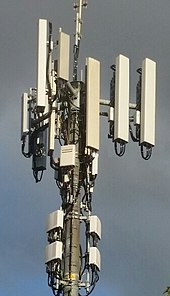
Wireless

Wireless communication is the transfer of information or power between two or more points that are not connected by an electrical conductor. The most common wireless technologies use radio waves. With radio waves distances can be short, such as a few meters for Bluetooth or as far as millions of kilometers for deep-space radio communications. It encompasses various types of fixed, mobile, and portable applications, including two-way radios, cellular telephones, personal digital assistants (PDAs), and wireless networking. Other examples of applications of radio wireless technology include GPS units, garage door openers, wireless computer mouse, keyboards and headsets, headphones, radio receivers, satellite television, broadcast television and cordless telephones. Somewhat less common methods of achieving wireless communications include the use of other electromagnetic wireless technologies, such as light, magnetic, or electric fields or the use of sound. Wireless communication is the transfer of information or power between two or more points that are not connected by an electrical conductor. The most common wireless technologies use radio waves. With radio waves distances can be short, such as a few meters for Bluetooth or as far as millions of kilometers for deep-space radio communications. It encompasses various types of fixed, mobile, and portable applications, including two-way radios, cellular telephones, personal digital assistants (PDAs), and wireless networking. Other examples of applications of radio wireless technology include GPS units, garage door openers, wireless computer mouse, keyboards and headsets, headphones, radio receivers, satellite television, broadcast television and cordless telephones. Somewhat less common methods of achieving wireless communications include the use of other electromagnetic wireless technologies, such as light, magnetic, or electric fields or the use of sound. The term wireless has been used twice in communications history, with slightly different meaning. It was initially used from about 1890 for the first radio transmitting and receiving technology, as in wireless telegraphy, until the new word radio replaced it around 1920. The term was revived in the 1980s and 1990s mainly to distinguish digital devices that communicate without wires, such as the examples listed in the previous paragraph, from those that require wires or cables. This became its primary usage in the 2000s, due to the advent of technologies such as mobile broadband, Wi-Fi and Bluetooth. Wireless operations permit services, such as mobile and interplanetary communications, that are impossible or impractical to implement with the use of wires. The term is commonly used in the telecommunications industry to refer to telecommunications systems (e.g. radio transmitters and receivers, remote controls, etc.) which use some form of energy (e.g. radio waves, acoustic energy,) to transfer information without the use of wires. Information is transferred in this manner over both short and long distances. The first wireless telephone conversation occurred in 1880, when Alexander Graham Bell and Charles Sumner Tainter invented the photophone, a telephone that sent audio over a beam of light. The photophone required sunlight to operate, and a clear line of sight between transmitter and receiver. These factors greatly decreased the viability of the photophone in any practical use. It would be several decades before the photophone's principles found their first practical applications in military communications and later in fiber-optic communications. A number of wireless electrical signaling schemes including sending electric currents through water and the ground using electrostatic and electromagnetic induction were investigated for telegraphy in the late 19th century before practical radio systems became available. These included a patented induction system by Thomas Edison allowing a telegraph on a running train to connect with telegraph wires running parallel to the tracks, a William Preece induction telegraph system for sending messages across bodies of water, and several operational and proposed telegraphy and voice earth conduction systems. The Edison system was used by stranded trains during the Great Blizzard of 1888 and earth conductive systems found limited use between trenches during World War I but these systems were never successful economically. In 1894, Guglielmo Marconi began developing a wireless telegraph system using radio waves, which had been known about since proof of their existence in 1888 by Heinrich Hertz, but discounted as a communication format since they seemed, at the time, to be a short range phenomenon. Marconi soon developed a system that was transmitting signals way beyond distances anyone could have predicted (due in part to the signals bouncing off the then unknown ionosphere). Guglielmo Marconi and Karl Ferdinand Braun were awarded the 1909 Nobel Prize for Physics for their contribution to this form of wireless telegraphy. Wireless communications can be via: Radio andmicrowave communication carry information by modulating properties of electromagnetic waves transmitted through space.
